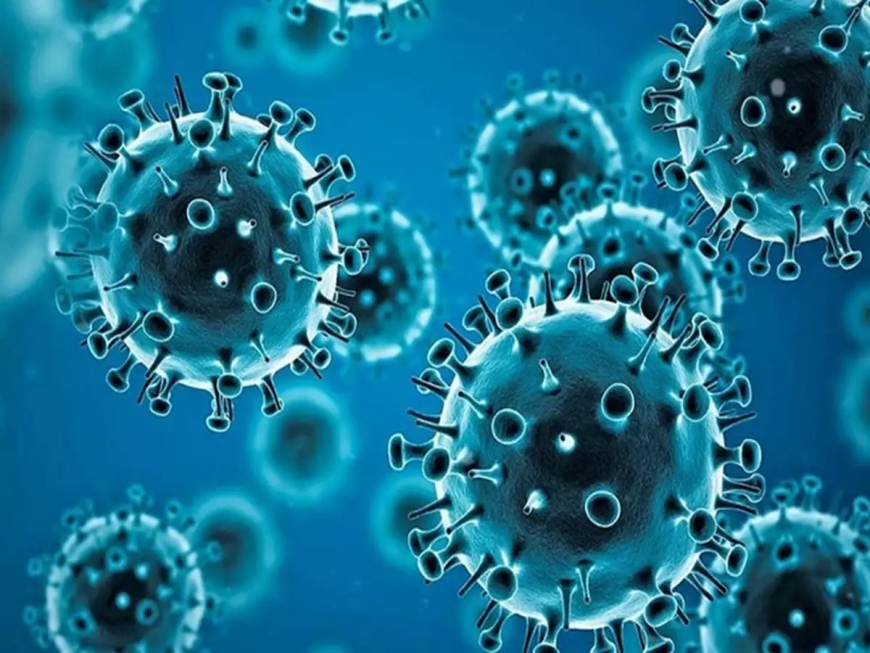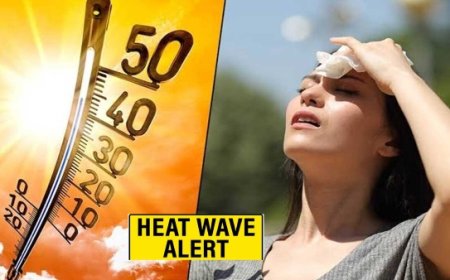China Reports HMPV Outbreak: Is It a New Virus? How Does It Compare to COVID-19? Are Vaccines Available?
Explore the recent HMPV outbreak in China, understand whether it’s a new virus, its similarities to COVID-19, and the status of vaccine development. Get the latest insights and updates.

HMPV Outbreak in China: Everything We Know So Far
A recent outbreak of human metapneumovirus (HMPV) in China has raised global concerns. As this respiratory virus spreads, many are questioning whether it is a new virus, how it compares to COVID-19, and whether there are vaccines available to combat it.
Here’s a detailed breakdown of what we know so far about HMPV, its symptoms, transmission, and the global response.
What Is HMPV?
-
Definition:
- HMPV stands for Human Metapneumovirus, a respiratory virus first identified in 2001.
- It belongs to the same family as respiratory syncytial virus (RSV) and can cause illnesses ranging from mild colds to severe respiratory infections.
-
Symptoms:
- Common symptoms include fever, cough, nasal congestion, and shortness of breath.
- Severe cases may lead to pneumonia, particularly in children, older adults, and individuals with weakened immune systems.
Is HMPV a New Virus?
-
Not New, But Concerning:
- Although HMPV is not a new virus, its outbreak in China is unusual due to the scale of reported cases.
- It has been circulating worldwide for years but is often underdiagnosed due to similarities with other respiratory illnesses.
-
Detection Challenges:
- HMPV symptoms overlap with other respiratory viruses like COVID-19 and the flu, making it harder to distinguish without specific tests.
How Does HMPV Compare to COVID-19?
-
Similarities:
- Both are respiratory viruses that spread through droplets when an infected person coughs or sneezes.
- Symptoms like fever, cough, and difficulty breathing are common in both infections.
-
Differences:
- HMPV is generally less contagious than COVID-19.
- While COVID-19 caused a global pandemic with high mortality rates, HMPV primarily impacts vulnerable groups like young children and the elderly.
-
Severity:
- COVID-19 has shown the potential to cause widespread complications, including long-term effects like long COVID.
- HMPV, while serious in certain cases, does not have the same level of global health impact.
How Is HMPV Transmitted?
-
Modes of Spread:
- The virus spreads through respiratory droplets, direct contact with infected individuals, or touching contaminated surfaces.
- Crowded spaces and close contact increase the risk of transmission.
-
Precautions:
- Standard preventive measures like wearing masks, maintaining hand hygiene, and avoiding crowded places are effective in reducing the spread of HMPV.
Is There a Vaccine for HMPV?
-
Current Status:
- As of now, no specific vaccine has been developed for HMPV.
- Researchers are exploring vaccine options, but progress has been slow due to the virus’s lesser-known status compared to other respiratory illnesses.
-
Treatment Options:
- There are no antiviral medications specifically for HMPV.
- Supportive care, including hydration, rest, and fever management, is the primary treatment approach.
Global and Local Responses
-
China’s Efforts:
- Health authorities in China are closely monitoring the outbreak, focusing on controlling the spread and raising awareness about preventive measures.
- Hospitals are equipped to handle severe cases, especially among high-risk groups.
-
International Monitoring:
- The global health community, including the WHO, is keeping an eye on the situation to ensure timely interventions if the outbreak escalates.
-
Public Awareness:
- Increased awareness about HMPV, its symptoms, and preventive measures is crucial to reducing its spread.
What Should You Do to Stay Safe?
-
Hygiene Practices:
- Wash hands regularly with soap and water for at least 20 seconds.
- Use hand sanitizers with at least 60% alcohol when soap is unavailable.
-
Avoid Close Contact:
- Maintain a safe distance from individuals showing symptoms of respiratory illness.
- Avoid touching your face, especially your eyes, nose, and mouth.
-
Seek Medical Attention:
- If you or someone you know experiences severe symptoms like difficulty breathing, consult a healthcare provider immediately.
Conclusion
While the HMPV outbreak in China has raised concerns, it’s important to understand that this virus is not new and primarily affects vulnerable groups. By taking preventive measures and staying informed, we can reduce its impact.
Although no vaccine exists yet, ongoing research and heightened awareness offer hope for better management of this virus in the future. As the situation evolves, global cooperation and timely interventions will be key to addressing the outbreak effectively.
What's Your Reaction?




























































